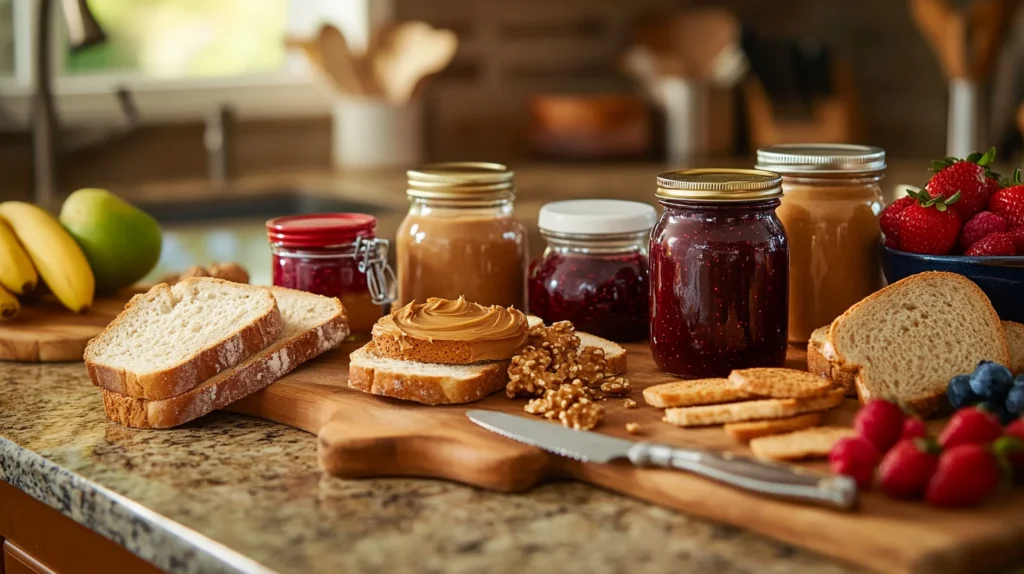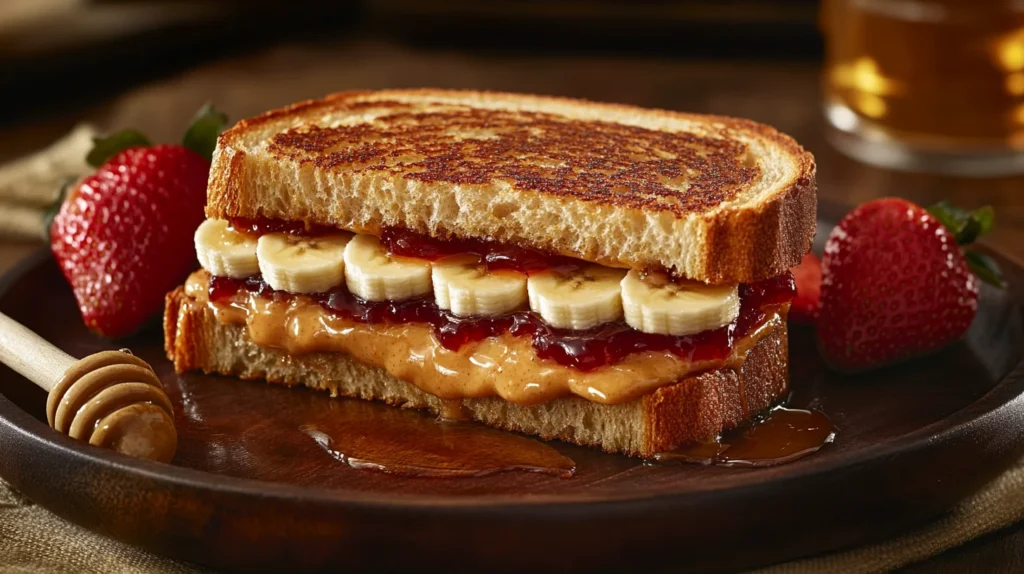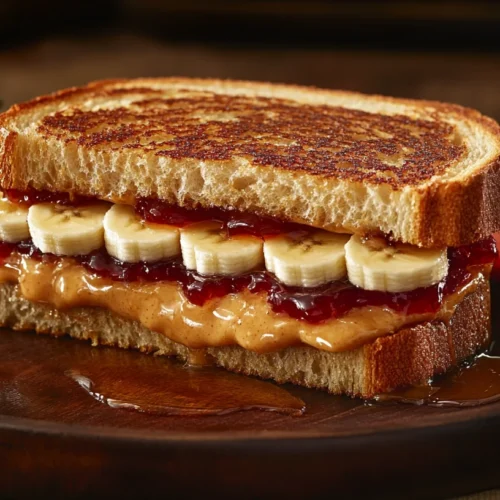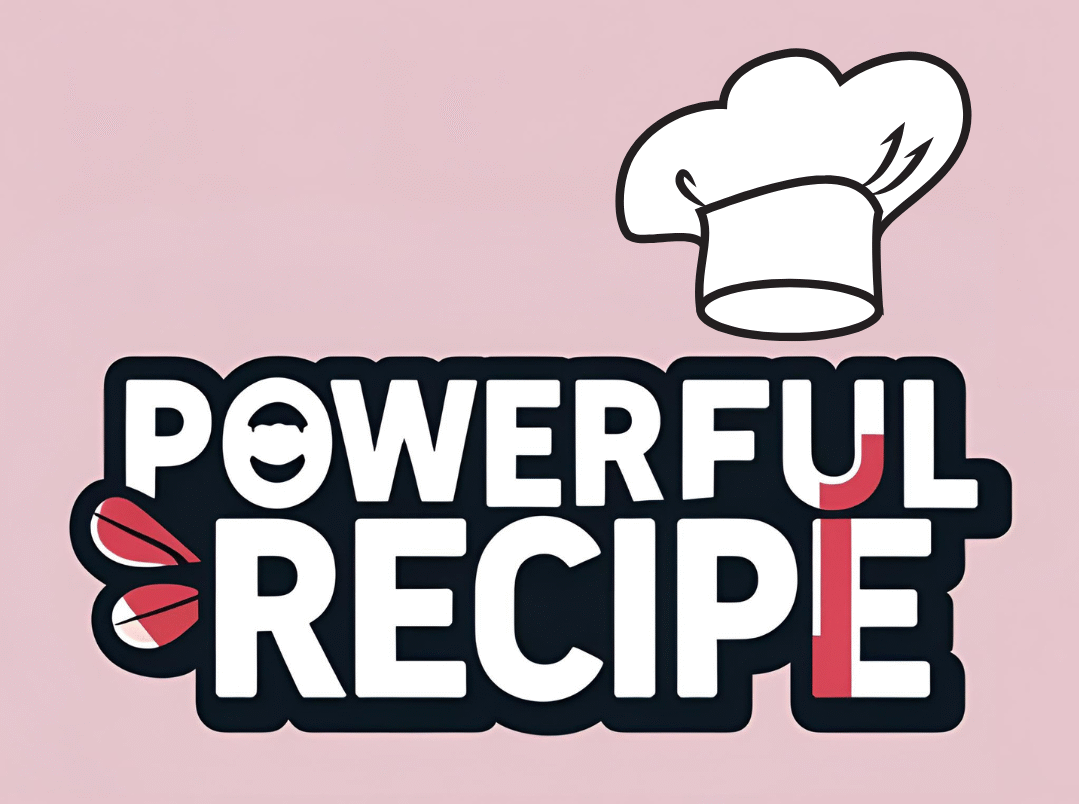The peanut butter and jelly sandwich is one of the most beloved and nostalgic foods in American culture. Simple yet satisfying, this sandwich has been a staple in lunchboxes, kitchens, and even college dorms for generations. Whether you enjoyed it as a childhood favorite or still reach for it as a quick and tasty meal, the PB&J sandwich holds a special place in many hearts.
But what makes this humble sandwich so popular? Its perfect balance of sweet and salty flavors, creamy and crunchy textures, and its ability to be customized in countless ways contribute to its enduring appeal. Beyond just being delicious, the PB&J sandwich is also easy to make, budget-friendly, and packed with nutritional benefits—making it a go-to choice for people of all ages.
In this ultimate guide, we will explore:
The history of the peanut butter and jelly sandwich
The best ingredients to use for a classic PB&J
Step-by-step instructions to making the perfect sandwich
Creative variations for those who love to experiment
️ The nutritional benefits of PB&J
Fun pop culture references and interesting facts
Whether you’re a longtime PB&J lover or a curious foodie looking to try new combinations, this guide will uncover everything you need to know about this timeless sandwich. Let’s dive in!
For those looking for a fresh and light lunch option, this Best Shrimp Salad Recipe is a great alternative!

The History of the Peanut Butter and Jelly Sandwich
The peanut butter and jelly sandwich has been a beloved classic for generations, but have you ever wondered how it came to be? The combination of creamy ppeanut butter and jelly sandwich, sweet jelly, and soft bread seems so natural today, but it wasn’t always a common pairing. Let’s take a look at the origins of peanut butter and jelly sandwich, the invention of jelly, and how they came together to form one of the most iconic sandwiches in history.
The origins of peanut butter and jelly Sandwich
Ancient civilizations like the Aztecs and Incas were among the first to grind roasted peanuts into a paste. However, the peanut butter we know today was not invented until much later.
- 1895: Dr. John Harvey Kellogg (yes, the creator of Kellogg’s cereals) patented a process for making peanut butter as a protein-rich food for patients who struggled to chew meat.
- Early 1900s: Peanut butter gained popularity as an affordable, nutritious food, especially during World War I, when it was promoted as a protein alternative to meat.
- 1922: Joseph Rosefield developed a method to make smoother, longer-lasting peanut butter and jelly sandwich by preventing the oil from separating—this led to the creation of modern brands like Skippy and Peter Pan.
The Evolution of peanut butter and jelly sandwich
While peanut butter was becoming more widespread, fruit preserves had been enjoyed for centuries. Ancient civilizations used honey or sugar to preserve fruits, creating early versions of jelly and jam. However, mass-produced jelly didn’t appear until the late 19th and early 20th centuries.
- 1917: Paul Welch, the founder of Welch’s, patented a method to make grape jelly from Concord grapes. His product became extremely popular, especially among soldiers during wartime.
- During World War II, peanut butter and jelly were included in U.S. military rations because they were non-perishable, easy to transport, and nutritious. Soldiers became accustomed to the pairing, and when they returned home, they continued to eat it.
When Peanut Butter and Jelly Sandwich Became a Sandwich
Although peanut butter and jelly sandwich were enjoyed separately for many years, it wasn’t until the early 1900s that they were combined into a sandwich.
- 1920s-1930s: Bread became cheaper and more widely available due to industrialized baking, making sandwiches more common.
- 1940s-1950s: Peanut butter and jelly sandwiches gained popularity, especially among children, due to their affordability and delicious taste.
- By the 1960s, PB&J had cemented itself as a staple in American households, school lunches, and cafeterias.
How the PB&J sandwich became a household favorite
Today, peanut butter and jelly sandwiches remain one of the most beloved foods in America. According to some estimates, the average American eats around 1,500 PB&J sandwiches by the time they turn 18! With endless variations and creative twists, this classic sandwich continues to evolve while staying true to its delicious roots.
Best Ingredients for a Perfect Peanut Butter and Jelly Sandwich
The beauty of a peanut butter and jelly sandwich lies in its simplicity—just three ingredients come together to create a perfect balance of flavors and textures. However, choosing the right ingredients can elevate your sandwich from ordinary to extraordinary. Let’s explore the best peanut butter, jelly, and bread options to craft the perfect PB&J.

The best types of jelly and jam for a peanut butter and jelly sandwich
Peanut butter is the heart of a PB&J sandwich, providing richness, protein, and healthy fats. There are several types to choose from, each offering a different taste and texture:
1. Creamy Peanut Butter
Smooth and easy to spread
Ideal for those who prefer a consistent texture
Popular brands: Jif, Skippy, Peter Pan
2. Crunchy Peanut Butter
Contains peanut pieces for added texture and crunch
Gives a more satisfying bite
Great for those who enjoy a bit of a chew
3. Natural Peanut Butter
Made with just peanuts and sometimes salt
No added sugars, hydrogenated oils, or preservatives
Needs to be stirred as the oil separates naturally
4. Powdered Peanut Butter (PB2)
Low-fat alternative to traditional peanut butter
Mixed with water to create a spreadable consistency
Good for health-conscious individuals
5. Alternative Nut and Seed Butters
For those with peanut allergies or dietary restrictions, there are many alternatives:
- Almond butter: Creamy and slightly sweet
- Cashew butter: Rich and buttery
- Sunflower seed butter: Nut-free alternative, slightly nutty flavor
- Soy nut butter: Another peanut-free option with a similar texture
Choosing the right peanut butter for your PB&J sandwich
The jelly (or jam) is what gives PB&J its signature sweet and fruity contrast. While grape jelly is the classic choice, there are many other delicious options.
1. Grape Jelly (The Classic)
Sweet and smooth
Pairs perfectly with peanut butter
Popular brands: Welch’s, Smucker’s, Concord Grape
2. Strawberry Jam
Slightly tart with chunks of real fruit
Adds a more natural, fresh flavor
A favorite among kids and adults alike
3. Raspberry Preserves
Tangy and bold flavor
Contains real raspberry seeds for added texture
Perfect for those who love a little tartness
4. Honey or Fruit Spreads
A natural and healthier alternative to processed jelly
Honey pairs beautifully with peanut butter for a smooth, golden sweetness
Apple butter or banana spread can also be great substitutes
5. Homemade Jam or Jelly
Fresh, less processed, and customizable
Allows for control over sugar content
Flavors like blueberry, blackberry, or peach can add a unique twist
Selecting the perfect bread for your PB&J
The bread serves as the foundation of a PB&J sandwich, holding everything together. Different types of bread can change the overall texture and taste of the sandwich.
1. Classic White Bread
Soft, fluffy, and neutral in flavor
The traditional choice for school lunches
Easy to spread peanut butter and jelly on
2. Whole Wheat Bread
Rich in fiber and nutrients
Slightly nutty taste complements peanut butter well
A healthier alternative to white bread
3. Sourdough Bread
Adds a slight tangy flavor
More hearty and chewy texture
Works well for grilled PB&J sandwiches
4. Multigrain or Seeded Bread
Adds texture and extra nutrition
Pairs well with natural peanut butter
A great choice for a more wholesome sandwich
5. Gluten-Free Bread
Perfect for those with gluten allergies
Available in many varieties, from rice-based to nut-based options
Toasting helps improve texture and taste
Bonus Add-Ons for Extra Flavor
If you want to take your PB&J to the next level, consider these delicious add-ons:
🍌 Sliced bananas – Adds natural sweetness and creaminess
🍯 Drizzle of honey – Enhances the flavor with extra depth
🥜 Chia or flax seeds – Boosts fiber and omega-3s
🍫 Chocolate chips or Nutella – For a dessert-like twist
🥓 Crispy bacon – Adds a salty, crunchy contrast
How to Make the Perfect Peanut Butter and Jelly Sandwich
Making a peanut butter and jelly sandwich might seem like a simple task, but there are a few tricks to making it perfect every time. From achieving the ideal peanut butter-to-jelly ratio to preventing sogginess, this step-by-step guide will help you master the art of the PB&J.
Step-by-step guide to making a PB&J sandwich
Gather Your Ingredients
Before you start, make sure you have:
Two slices of bread (white, whole wheat, sourdough, or your preferred type)
Peanut butter (creamy or crunchy)
Jelly or jam (grape, strawberry, raspberry, or your favorite flavor)
A butter knife or spreader
Spreading techniques for peanut butter and jelly
Take one slice of bread and spread a generous layer of peanut butter.
Use about 1-2 tablespoons of peanut butter for an even spread.
Spread it all the way to the edges to ensure every bite has peanut butter.
✅ Pro Tip: If you want to prevent the bread from becoming soggy, spread a thin layer of peanut butter on both slices of bread before adding the jelly. This acts as a barrier against moisture!
Spread the Jelly
On the second slice of bread, spread about 1 tablespoon of jelly or jam.
Make sure the jelly is evenly distributed but not too thick—otherwise, it can make the sandwich messy.
If you prefer a stronger fruit flavor, use preserves instead of jelly for more texture and real fruit pieces.
Assemble the Sandwich
🟢 Carefully place the jelly-covered slice on top of the peanut butter slice, with the jelly side facing down.
🟢 Press the sandwich gently to help the ingredients stick together.
✅ Pro Tip: If you don’t like jelly oozing out when you take a bite, avoid overloading the sandwich with too much jelly. A balanced PB&J is key!
Slice (Optional, but Recommended)
🟢 Use a knife to cut the sandwich into halves, quarters, or even fun shapes for kids.
🟢 Popular cuts:
- Diagonal cut (creates two triangular halves)
- Straight cut (makes two rectangles)
- No crust version (perfect for picky eaters)
Tips for Spreading Peanut Butter and Jelly Evenly
Use a butter knife or a small spatula for smooth spreading.
Stir natural peanut butter before using to mix the oils and avoid clumps.
Let peanut butter sit at room temperature for easier spreading.
Warm up the jelly slightly if it’s too thick to spread evenly.
Avoiding common PB&J sandwich mistakes
Using too much jelly → This can make the sandwich too soggy. Stick to 1 tablespoon of jelly per sandwich.
Not spreading to the edges → Leads to dry, flavorless bites. Always spread PB&J evenly!
Using bread that’s too soft → Super soft bread can tear apart while spreading peanut butter. Toasting the bread slightly helps.
Forgetting to mix natural peanut butter → The oil separation can make the sandwich messy and uneven in texture.
How to Pack a PB&J Without Getting Soggy
Use peanut butter as a moisture barrier: Spread peanut butter on both slices of bread before adding jelly.
Keep the sandwich separate until eating: Pack peanut butter and jelly separately and assemble just before eating.
Use thicker bread: Whole wheat or sourdough holds up better than super soft white bread.
Wrap in wax paper or parchment paper: Keeps the sandwich fresh without trapping too much moisture.
Creative Variations of the Peanut Butter and Jelly Sandwich
While the classic peanut butter and jelly sandwich is delicious on its own, there are countless ways to elevate and reinvent this childhood favorite. Whether you want to add a twist for extra flavor, make it more nutritious, or turn it into a gourmet treat, here are some fun and creative PB&J variations to try!
Looking for more delicious breakfast ideas? Check out this Carrot Bundt Cake Recipe for another nostalgic treat! 🍰

1. PB&J with Bananas, Honey, or Marshmallow Fluff
Adding extra ingredients to your PB&J can take it to the next level!
🥜 PB&J with Bananas:
Adds a creamy texture and natural sweetness
A great energy booster with potassium and fiber
Try using cinnamon or honey for extra flavor
🍯 PB&J with Honey:
Swapping jelly for honey makes a smoother, richer sandwich
Great for those who want to reduce processed sugar intake
Try raw or flavored honey (like lavender or orange blossom)
🍡 Fluffernutter PB&J (With Marshmallow Fluff):
A sweet and indulgent twist on the classic
Mixes peanut butter with marshmallow fluff for extra creaminess
Try using Nutella instead of jelly for a chocolatey treat
2. Grilled peanut butter and jelly sandwiches
Turning your PB&J into a grilled sandwich enhances the flavors and gives it a crispy, golden-brown texture.
🔥 How to Make It:
Prepare a PB&J as usual
Grill in a pan on medium heat (like a grilled cheese sandwich)
Flip when golden brown and toast the other side
Pro Tip: Add a sprinkle of cinnamon or crushed nuts for extra crunch!
3. Peanut Butter and Jelly French Toast
Turn your PB&J into a breakfast favorite by making it into French toast!
🥞 How to Make It:
Make a PB&J sandwich as usual
Whisk together eggs, milk, cinnamon, and vanilla extract
Dip the sandwich in the mixture, coating both sides
Cook on a buttered skillet until golden brown
Dust with powdered sugar or drizzle with maple syrup
4. Fun PB&J sandwich recipes for kids
PB&J can be made into bite-sized sushi rolls—perfect for kids (and adults)!
🍣 How to Make It:
Use a rolling pin to flatten a slice of bread
Spread peanut butter and jelly evenly
Roll the bread into a tight log
Slice into small sushi-like pieces
Pro Tip: Add banana slices or strawberries inside for extra sweetness!
5. PB&J Smoothie: A Healthy Drink Option
Want to enjoy PB&J without the bread? Try a PB&J smoothie—perfect for breakfast or post-workout!
🥤 How to Make It:
1 banana (or ½ cup frozen strawberries)
1-2 tablespoons peanut butter
1 tablespoon jelly or honey
1 cup milk or yogurt
Handful of ice cubes
Blend until smooth and creamy!
6. PB&J Oatmeal: A Nutritious Breakfast Twist
Instead of using bread, mix PB&J into oatmeal for a filling, protein-packed meal.
🥣 How to Make It:
Cook oats with milk or water
Stir in peanut butter and a spoonful of jelly
Top with chopped nuts, fresh fruit, or honey
7. Spicy PB&J: A Grown-Up Twist
For those who love a little heat, adding spice to a PB&J sandwich can be a game-changer.
🌶️ How to Make It:
Add a dash of cayenne pepper or hot honey
Use chili-infused peanut butter
Pair with spicy mango jam or jalapeño jelly
🔥 Pro Tip: Try it with toasted sourdough for an extra bold flavor!
Want to explore more quick and flavorful meal ideas? Try this Easy Lemon Pepper Chicken Recipe for a satisfying dinner! 🍗
Nutritional Value and Health Benefits of a Peanut Butter and Jelly Sandwich
A peanut butter and jelly sandwich is more than just a childhood favorite—it’s a surprisingly nutritious meal when made with the right ingredients. Packed with protein, healthy fats, fiber, and essential nutrients, PB&J can be part of a balanced diet. However, it’s important to choose the right ingredients to maximize its health benefits while avoiding excess sugar and unhealthy additives.
Nutritional Breakdown of a Classic PB&J
The nutritional value of a PB&J sandwich depends on the type of bread, peanut butter, and jelly used. Below is the approximate nutrition of a standard PB&J made with two slices of white bread, 2 tablespoons of peanut butter, and 1 tablespoon of jelly.
| Nutrient | Amount per Sandwich |
|---|---|
| Calories | 350-400 kcal |
| Protein | 12-15g |
| Carbohydrates | 40-45g |
| Fiber | 3-5g |
| Sugar | 12-18g |
| Healthy Fats | 15-18g |
| Sodium | 300-400mg |
These numbers can change based on ingredient choices. Using whole-grain bread, natural peanut butter, and low-sugar jelly can make a PB&J healthier.
Health Benefits of PB&J Sandwich
1. A Great Source of Protein
Peanut butter is naturally rich in plant-based protein, which helps with:
Muscle growth and repair
Keeping you full longer
Supporting a healthy metabolism
A single PB&J sandwich provides as much protein as an egg or a small serving of chicken!
2. Healthy Fats for Heart Health
Not all fats are bad! Peanut butter contains monounsaturated and polyunsaturated fats, which:
Lower bad cholesterol (LDL)
Improve heart health
Support brain function
Health Tip: Choose natural peanut butter with no hydrogenated oils to avoid unhealthy trans fats.
3. Fiber for Digestion and Satiety
Using whole-grain bread in your PB&J boosts fiber intake, which:
Improves digestion
Helps control blood sugar levels
Keeps you feeling full and satisfied
Health Tip: Opt for whole wheat or multigrain bread instead of white bread to increase fiber.
4. Provides Quick Energy
PB&J is a great meal for athletes, students, and busy individuals because it provides a steady release of energy.
Peanut butter = Protein + healthy fats for long-term energy
Jelly = Quick carbohydrates for instant energy boost
Bread = Steady fuel source for the body
That’s why PB&J is a favorite pre-workout or post-workout snack!
5. Rich in Essential Vitamins and Minerals
A PB&J sandwich contains important nutrients such as:
Vitamin E – A powerful antioxidant for healthy skin and immune function
Magnesium – Supports muscle function and heart health
Potassium – Helps regulate blood pressure
B Vitamins – Supports energy metabolism
Health Tip: Using homemade jam instead of store-bought jelly can help reduce added sugars while preserving natural vitamins from fruit.
Potential Health Concerns and How to Make a Healthier PB&J
While PB&J has many benefits, there are a few health concerns to watch out for:
❌ High Sugar Content – Store-bought jelly can contain added sugars that spike blood sugar levels.
✔️ Solution: Use low-sugar jelly, homemade jam, or mashed fruit (like bananas).
❌ Processed White Bread – White bread has little fiber and can cause blood sugar spikes.
✔️ Solution: Use whole wheat, sourdough, or multigrain bread.
❌ Unhealthy Peanut Butter – Some peanut butters contain hydrogenated oils and excess salt/sugar.
✔️ Solution: Choose natural peanut butter with only peanuts and salt.
Is PB&J Good for Weight Loss or Muscle Gain?
For Weight Loss
- PB&J can be part of a healthy weight-loss diet when made with the right ingredients.
- Use whole-grain bread, natural peanut butter, and low-sugar jelly to keep it nutrient-dense without excess calories.
- Control portion sizes—one sandwich is usually enough!
For Muscle Gain
- PB&J is a high-protein, calorie-dense snack, making it great for muscle-building.
- Add banana slices or a protein shake to boost calories and nutrients.
- Choose crunchy peanut butter for extra texture and protein.
Final Thoughts: Is PB&J a Healthy Choice?
YES—when made with wholesome ingredients! PB&J is a:
Nutritious and balanced meal
Quick and easy to prepare
Affordable and accessible for all budgets
By choosing natural peanut butter, whole-grain bread, and low-sugar jelly, you can enjoy a PB&J sandwich as a delicious and healthy part of your diet!
Frequently Asked Questions
1. Is a peanut butter and jelly sandwich healthy?
Yes, a peanut butter and jelly (PB&J) sandwich can be healthy if made with nutritious ingredients. Peanut butter provides protein and healthy fats, whole-grain bread adds fiber, and jelly (especially low-sugar or homemade versions) gives natural fruit benefits. However, store-bought jelly can be high in added sugars, and some peanut butters contain unhealthy hydrogenated oils. Choosing natural peanut butter, whole-grain bread, and reduced-sugar jelly makes PB&J a balanced and healthy meal.
2. Why are PB&Js so good?
PB&J sandwiches are so good because they combine the perfect balance of flavors and textures:
Sweet & Salty: The sweetness of jelly contrasts with the savory, salty peanut butter.
Creamy & Crunchy: Whether using creamy peanut butter or crunchy peanut butter, the combination with soft bread makes each bite satisfying.
Comfort Food Factor: PB&J is nostalgic, reminding many people of their childhood.
Quick & Convenient: It’s easy to make, requires no cooking, and is perfect for a fast, tasty meal.
3. Is PB&J an American thing?
Yes, the peanut butter and jelly sandwich is considered a classic American food. While peanut butter and fruit preserves exist worldwide, PB&J sandwiches became popular in the U.S. in the early 1900s, especially during World War II when American soldiers ate them as part of their rations. After the war, PB&J sandwiches became a household staple in American families and school lunches. However, variations of nut butter and fruit spread sandwiches exist in other cultures as well!
4. What is the ratio for PB&J?
The perfect peanut butter-to-jelly ratio depends on personal preference, but a classic ratio is:
2 tablespoons peanut butter
1 tablespoon jelly
This 2:1 ratio ensures the sandwich isn’t too sweet while still giving a strong peanut butter flavor with a hint of fruitiness. Some people prefer equal parts (1:1 ratio) or even more jelly than peanut butter. The key is spreading evenly to get a balanced bite every time!
Conclusion
The peanut butter and jelly sandwich is more than just a simple meal—it’s a timeless classic that has stood the test of time. Loved by kids and adults alike, PB&J sandwiches are delicious, nutritious, affordable, and incredibly easy to make. Whether you prefer the classic version or like to experiment with creative variations, there’s a PB&J for everyone.
From its rich history to its pop culture influence, PB&J has become an iconic part of American cuisine. It offers a great balance of protein, healthy fats, and energy-boosting carbohydrates, making it a convenient choice for athletes, students, and busy professionals. Plus, with the right ingredients—whole-grain bread, natural peanut butter, and low-sugar jelly—PB&J can be part of a healthy and balanced diet.
So whether you’re making a quick lunch, a grilled PB&J treat, or even a PB&J smoothie, enjoy this simple yet legendary sandwich. After all, few foods bring as much comfort, nostalgia, and joy as a perfectly made peanut butter and jelly sandwich!

Classic Peanut Butter and Jelly Sandwich Recipe
Equipment
- ✔ Butter knife or spoon
- ✔ Cutting board
- ✔ Plate
- ✔ Spreader (optional)
- ✔ Bread knife (optional, for slicing the sandwich)
Ingredients
- 2 slices of bread white, whole wheat, sourdough, or gluten-free
- 2 tablespoons peanut butter creamy or crunchy
- 1 tablespoon jelly or jam grape, strawberry, raspberry, or your favorite flavor
- Optional Add-Ons:
- ½ sliced banana 🍌
- 1 teaspoon honey 🍯
- A pinch of cinnamon
- 1 tablespoon chopped nuts
- 1 tablespoon marshmallow fluff
Instructions
- Step 1: Prepare the Ingredients
- ✔ Place two slices of bread on a cutting board or plate.
- ✔ Stir natural peanut butter if it has separated.
- Step 2: Spread the Peanut Butter
- ✔ Use a butter knife to spread peanut butter evenly on one slice of bread.
- ✔ Make sure to spread all the way to the edges for a consistent taste in every bite.
- Step 3: Spread the Jelly
- ✔ On the second slice of bread, spread 1 tablespoon of jelly or jam evenly.
- ✔ Be careful not to use too much jelly, as it can make the sandwich too soggy.
- Step 4: Assemble the Sandwich
- ✔ Place the jelly-covered slice of bread on top of the peanut butter slice.
- ✔ Press gently to help the peanut butter and jelly stick together.
- Step 5: Slice and Serve
- ✔ Use a knife to cut the sandwich diagonally or into halves (optional).
- ✔ Serve immediately and enjoy!
Notes
For extra crunch: Use toasted bread or add granola/nuts to the sandwich.
Healthier option: Use whole grain bread, natural peanut butter, and reduced-sugar jelly.
Make it gourmet: Try grilling the PB&J sandwich in a pan with butter for a crispy twist!

